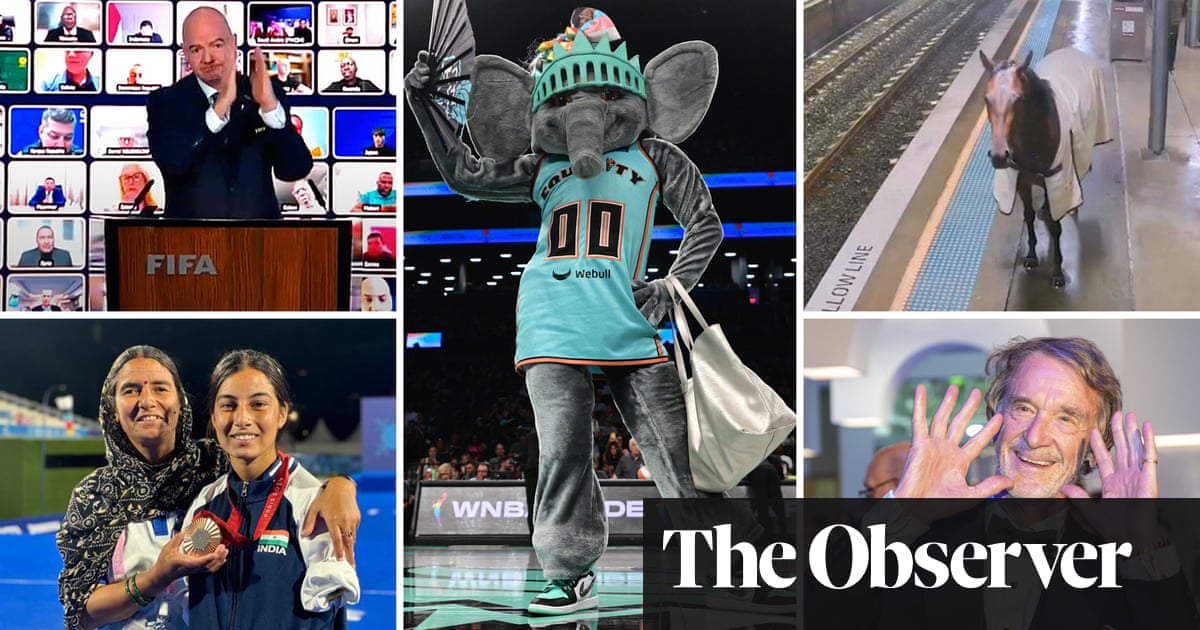The road out of Caloto winds through a lush valley dotted with fields of grazing cows, then into hills past a patchwork of pineapple farms, small pockets of virgin rainforest and the startlingly vivid green of coca plantations.
This valley in the foothills of the northern Andes looks deceptively calm on an early winter afternoon, but it sits in one of the most dangerous regions in Colombia, particularly for children.
Eight years ago, in 2016, a peace deal officially brought the country’s long civil war to an end, and won a Nobel peace prize for then-president Juan Manuel Santos. But in western Cauca region, where the war had been particularly violent, and peace eagerly awaited, the calm lasted barely six months. Government promises of alternative jobs and land reform were never honoured.
Breakaway guerrilla factions that opposed the peace accord, and demobilised fighters who couldn’t find work, picked up weapons again, vying with criminal gangs for control of the area’s lucrative trade in drugs and illegally mined gold. There were 16 armed groups in the area at one point, and though they have consolidated to about a quarter of that number, violence has rekindled, mutated and built to a new ferocity, Indigenous activists say.
The groups have a constant need for new foot soldiers. They are turning to communities they fight among to try to meet it. Over the last four years, more than 850 children have been taken from here to fight; hundreds are still missing.

“The hardest, most difficult thing is what is happening to our children,” said Arbey Noscue Silva, a leader of the Kiwe Thegnas Indigenous Guard, an unarmed group that for two decades has protected Indigenous communities and leaders in Cauca.
“We see, at 13 or 14 years old, the armed groups start luring them away with things we can’t offer them,” said Silva, a member of the Nasa, one of the best organised and most numerous Indigenous groups in the region.
Some children are taken by force to fight but many are tempted by promises of easy work, goods such as new phones or clothes, or even plastic surgery or dental care. In a historically marginalised area, with few economic opportunities for young people, these offers can be hard to resist.
Caloto has some of the highest rates of child recruitment in Colombia, said Vanessa Noscue, a project coordinator for the area with War Child, one of three charities supported by the Guardian and Observer Christmas appeal this year, alongside Médecins Sans Frontières and Parallel Histories. The appeal has so far raised more than £1m.
The rising violence of recent years has brought a grim kind of equality. “It used to be that boys and men were more likely to be assassinated or recruited. Now they are targeting women too,” Noscue said.
Some women are targeted for sexual abuse and exploitation. In a previous role as a counsellor to young girls, Noscue heard from some that they had been forced to take cocaine to create an addiction, and to accept one of the fighters as a “sexual partner”.
Many, like the boys, head straight for the frontlines. “The most terrible thing is that armed groups put them forward first to fight in the frontline, despite their lack of experience,” said Yonier Esteban Pacho Acalo, a Nasa youth leader. “There are 16- and 17-year-olds who are not with us now,” added Acalo, who has lost several friends to the violence and worries about pressure on his 13-year-old brother.
The community understood the full scale of the child recruitment problem in 2019 when they stepped up monitoring, said Anyi Zapata, from the Association of Indigenous Councils in northern Cauca (ACIN). As the first female head of the network for protection of life at ACIN, Zapata is responsible for security and human rights in the 22 Indigenous territories scattered across Cauca.
Amid rising reports of children going missing, ACIN’s monitors began reaching out to families and communities to confirm and register cases of child recruitment to armed groups. That year they recorded 10 cases; in 2020 it was 110; and by 2021 it had reached 272 cases.

“When we started surveying our territories, we discovered a huge number of disappeared children. We realised they were being kidnapped,” said Zapata. “There was so much fear – mothers burying their children in the middle of the night because it was so secret.”
In the four years to August 2024, ACIN registered 851 cases of child recruitment, a figure they believe captures just part of the problem. The majority of those children are still missing, and dozens have been confirmed as victims of the fighting.
Zapata said: “We have managed to rescue about 300 and know of about 40 or 50 who have been killed. We don’t know how many of the others are in mass graves.”
Silva, the Kiwe Thegnas coordinator, sees the recruitment and trafficking in children as part of a broader attack on Indigenous communities by armed groups. The past year has seen a sharp rise in assassinations of Nasa spiritual elders, whose role in the community had been largely respected, even in the most violent periods of the civil war when other Nasa leaders were attacked. “This is something you can’t replace. There are very few of them, and killing them is really a process of extermination of our community,” he said.
A total of 13 spiritual leaders have been killed in Cauca since 2012, but six of them were assassinated in the past year. These were all people chosen for their role because they were born “with the spirit” and then trained over decades. These losses demoralise the community, weaken its social fabric and risk undermining its hold on traditional lands, he said, so it is easier for outsiders in the armed group to move into an area.
“You don’t just lose the individual, you lose all their knowledge, all the cultural practice,” Silva said. And between child recruitment and targeting the elders, the groups are “targeting the future and the past of the community”.
But this corner of Colombia has long been known for defiance as well as violence, with a decades-old tradition among its Indigenous communities of resisting armed outsiders – whether that’s guerrillas, the state army or paramilitaries.
“Colombians say ‘Cauca resiste’, ‘Cauca stands strong’,” said Noscue. The War Child project she coordinates – Mae Kiwe or Mother Earth – is part of this resistance, supporting ACIN efforts in Cauca to reach young people at risk. Its name reflects the link that many Colombian Indigenous communities see between the exploitation of their land and natural environment and the exploitation of their young people.

In Caloto, a youth hub offers a safe space for activities including sports, music and art, where young people can talk about the pressures they face. It aims to bolster community ties and offer alternative ways to earn a living in communities with few jobs and where fighting may seem like the only way to get paid.
“We always say we aren’t a solution – we are another option for young people,” said 22-year-old Willington Garcia Canas, a youth leader at the centre, who was drawn there himself by the dance programme run by the hub. It is open to young people as well as children, as people are vulnerable well into their 20s.
Natalia, who asked to remain partly anonymous, grew up in Caloto until, at 18, she went to fight in a war that had officially ended four years earlier. It was a life of hunger, fear, cold, damp, and the constant threat of death and loss.
She said she joined voluntarily but left after three years. Now she would never help another young person follow her path. “We would be soaked in the rain, baked in the sun, without anything to eat,” she said. “We saw our comrades fall. I learned to value my parents, having a roof and food.”
Even the act of recording child recruitment is dangerous – because it risks interfering with the flow of fighters to some of the most ruthless and violent groups in the country. Sandra Patricia Silva, head of the human rights observatory for ACIN, which collects most of its data, has faced death threats, and was recently followed by a group of armed men.
“It makes you afraid, we go to all the territories with no guards, and sometimes I work alone,” she said.
In March this year, 65-year-old Nasa leader Carmelina Yule Paví was assassinated in nearby Toribio while trying to stop armed groups recruiting a child. But the Indigenous Guard, the Kiwe Thegnas, have an even more daunting task. They try to intercept groups recruiting children, and to help young people escape, without weapons to back them up. They carry only symbolic wooden batons decorated with ribbons of red and green, colours of the earth and blood. Their uniform is blue gilets worn over normal clothes; their weapon is moral authority and community solidarity.
Their approach sounds improbable but the force has decades of experience from the civil war era. The rescue team operates on a 24-hour basis, and often gets several calls a day.
Silva will sometimes travel to meet commanders holding children, and try to convince them to let them leave.
“I try to open up, to tell them that kids get bored and will try to run away – their mother is missing them,” he said. Sometimes it works.

.png) 3 months ago
29
3 months ago
29













































